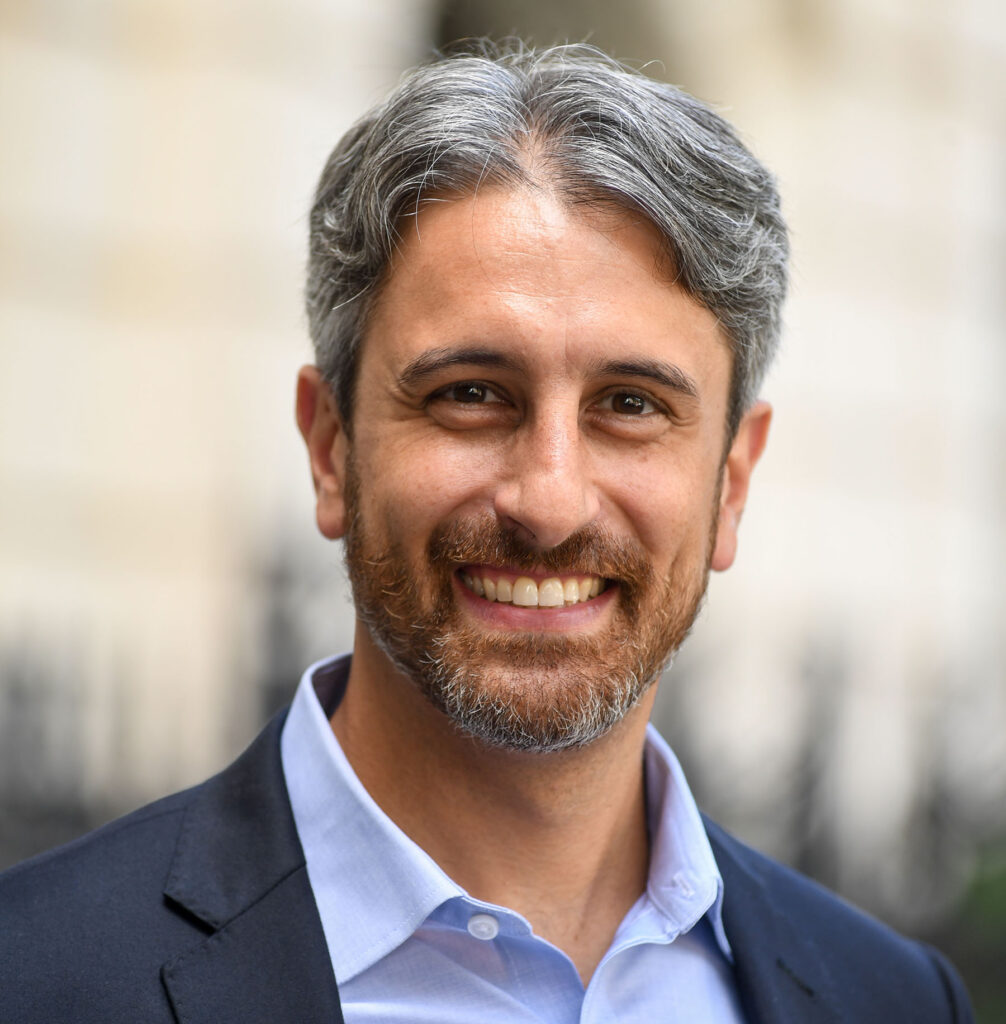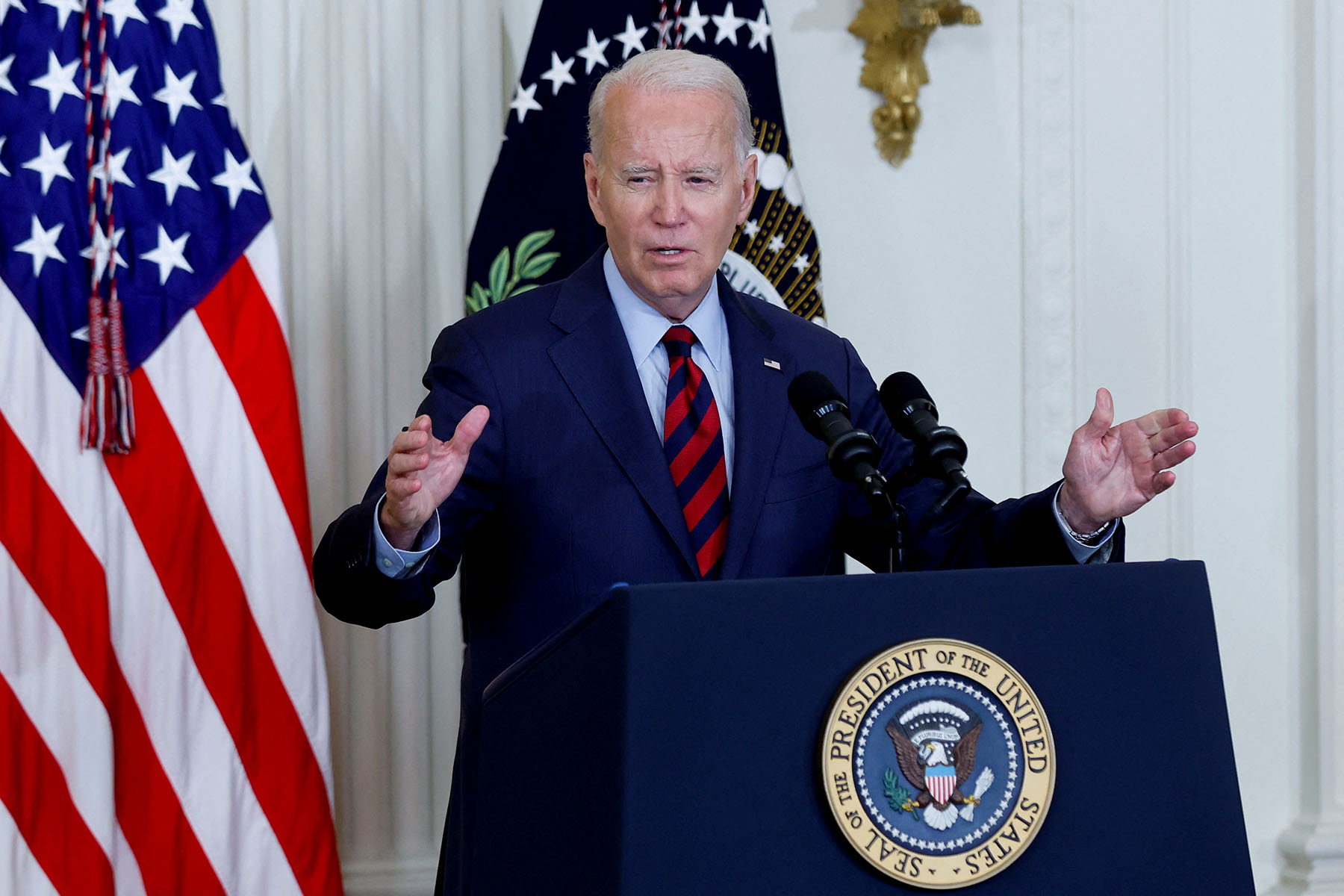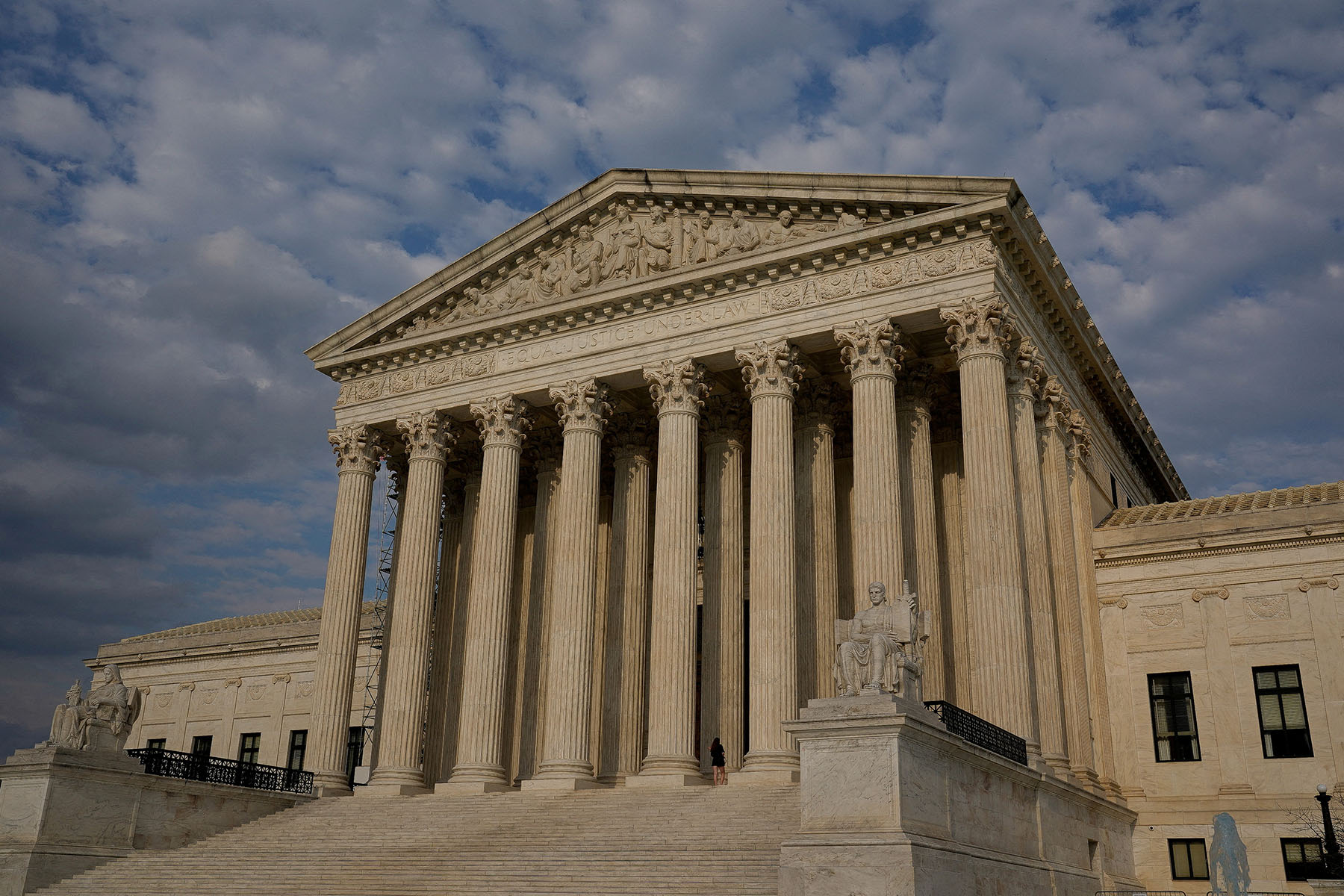Mis- and disinformation on major social media platforms grew exponentially during the 2016 presidential election and the COVID-19 pandemic, which prompted efforts by the U.S. government to communicate its concerns about the spread of such speech on major social media platforms.
Years later, the Supreme Court is tasked with deciding whether the Biden administration’s efforts to curtail mis- and disinformation online violates the First Amendment.
The case, Murthy v. Missouri, was brought by the Republican Attorneys General in Missouri and Louisiana, as well as a group of five social media users, including physicians who claim their posts criticizing COVID-19 policies were unconstitutionally censored and the government overstepped in its attempt to discuss COVID-19 and election misinformation with social media platform executives.
A federal judge in Louisiana granted a preliminary injunction in July blocking the Biden administration and key government agencies from communicating with the platforms, describing the government’s efforts as a “far-reaching and widespread censorship campaign.” That order was then significantly narrowed by the U.S. Court of Appeals for the Fifth Circuit, but the appellate court said officials cannot attempt to “coerce or significantly encourage” changes in online content. In its decision to take on the case in October, the Supreme Court blocked the lower courts’ restrictions on the administration’s communications with social media companies throughout the duration of the litigation. Oral arguments are scheduled on March 18.
First Amendment Watch spoke with Alex Abdo, litigation director of the Knight First Amendment Institute at Columbia University, which filed an amicus brief on behalf of neither party in the case. Abdo discussed the importance of the social media cases before the court this term, the need for clarity on the constitutional line between persuasion and coercion, and expressed his belief that it’s important for the government to have the opportunity to express its own views to social media platforms that have the power to shape public opinion.
Editor’s note: This interview has been edited and condensed for length and clarity.
FAW: Can you explain what “jawboning” is and outline the First Amendment implications of it? Why is it pertinent to this case?
AA: Jawboning is the practice of governments trying to pressure what we call speech intermediaries, which are companies or organizations that host the speech of others, to silence viewpoints that the government does not like. And the First Amendment has long been interpreted to forbid the government from trying to coerce speech intermediaries into doing just that, silencing views the government disfavors. But contours of that restriction on the government have never really been fully clarified by the Supreme Court. And that’s really what’s at issue in actually two cases that are now in front of the Supreme Court, Murthy v. Missouri and the National Rifle Association v. Vullo. Both cases raise the question of when does government pressure on social media platforms, or in the NRA case, on insurance providers, to target disfavored viewpoints, violate the First Amendment? And for a very long time, most people have understood the line to be between coercion, which the First Amendment forbids, and persuasion, which the First Amendment allows. But even if you accept that that’s the right line, the Supreme Court has never really told us where exactly the boundary is between unconstitutional coercion and permissible persuasion. It turns out that that really matters because there’s a spectrum of engagement between the government and private speech intermediaries and we need some clarity on where the line is so we know what the government is allowed to do and what the public is entitled to expect the courts to prevent the government from doing.
FAW: Your organization filed an amicus brief in support of neither party in this case, and it references the Supreme Court’s 1963 decision in Bantam Books v. Sullivan and the subsequent legal test it produced. Can you tell me about this legal test and how that line was drawn between unconstitutional coercion and constitutional persuasion?
AA: The Bantam Books case involved a commission that the state of Rhode Island had formed on morality and youth, and the commission would send notices to book distributors about books that the commission deemed offensive or objectionable with the goal of pressuring those book distributors into pulling those books from their shelves. The way they accomplished that was by essentially tacitly threatening prosecution for violating the state’s obscenity laws. The Supreme Court said that amounts to an informal system of censorship, because the state is indirectly coercing censorship, and the First Amendment forbids the state from doing indirectly what it cannot do directly, which is a sensible constitutional line to do, not just sensible, but important. It’s important to prevent the government from making an end run around the bedrock First Amendment limitation on official censorship. That was the last significant thing the Supreme Court said about this distinction between coercion and persuasion, and it’s been over 60 years since. It turns out that it’s hard to know where persuasion turns into coercion because the two concepts exist along a spectrum. And there’s just a lack of clarity in the court system about when government efforts to pressure meet that threshold.



